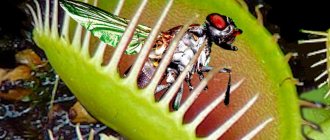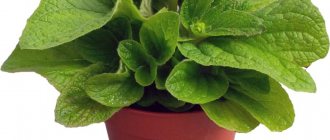Passion flowers are not only unusual flowers that will decorate any garden, but also an exotic treat. Some species produce juicy and healthy fruits. It is unpretentious in care, but requires the gardener to have some skills and knowledge.
Belongs to the passionflower family. It can be either a liana-like perennial shrub or an annual herb. Its habitat is tropical forests. It grows wild in Australia, Asia, Peru and the Mediterranean. The plant has a developed and strong root system. The main root is up to 2-3 cm thick and up to 2 meters long. The stems are flexible, smooth and thin, and can be 10 m or more in length.
In their natural habitat, some specimens are 45 meters long.
The leaves are dark green in color, lobed or whole. The petioles are about 3 cm on average and serve to accommodate the leaves. Long stalks form colorful flowers with a diameter of 50-150 mm, depending on the species. A flower consists of five: sepals, petals, bracts and stamens, as well as three stigmas.
What is passionflower, what does it look like: photos, signs and superstitions
The flower called “passionflower” is very unusual and rare. It is distinguished by incredibly beautiful flowering. It is not uncommon for a plant to have other, more well-known names:
- Passionflower
- Cavalier star
Passionflower has a smooth stem and can curl. The average plant length is ten meters . The leaves of the plant have an interesting color: they are green on top and gray below.
Passionflower blooms with fairly large flowers. Flowering has shades of purple, red and light white. In addition, the plant may have fruits that are no larger than an egg. Passionflower blooms throughout the summer ; the flowers die off only in the fall.
The name of the plant has a very interesting history. The word “passionflower” itself consists of two Latin words:
- "passio" - to suffer, suffering, suffering
- "flos" - bloom, flowers
Passion flower Passion fruit - passion fruit
The name of the plant was given in ancient times by missionaries traveling around the world and arriving in South America. It was to them that this flower seemed very symbolic, reminding them of the suffering of Christ.
themselves are very large, reaching ten centimeters in diameter. They are star shaped . Their color is bright and unusual, has many color shades. Flowers grow on long stalks.
The passionflower flower has five petals. That is why he is often compared to Christ, arguing that he had five wounds. In addition, the flower has exactly five sepals. Each bud and flower has an ovary , which contains three stigmas. There are also exactly five stamens around the stigmas.
Variety of passionflower flowers
Passionflower flowers have a very pleasant sweet aroma . Picking flowers will not allow them to remain fresh for a long time; they quickly wither.
There is a certain “language of flowers” that represents passionflower as a flower of respect and fidelity. That is why, if a man gives a woman passionflower, he promises her a long, strong relationship imbued with trust and sensuality.
Possible problems
- Slowdown in growth or complete stop - cold storage, lack of nutrients, lack of lighting, moisture deficiency.
- The falling of buds is a lack of humidity in the air.
- The stem rots at the base - too frequent and abundant watering.
- The leaf blades wither and curl —passiflora is cold.
- Cracking of fruits is a lack of boron in the soil.
- Underdevelopment of new leaves , their shrinkage - lack of sunlight and nutrients.
- Black spots appear on the fruits - cold air and high humidity.
Types of passionflower, what does the flower look like?
The most basic types of plants:
- Edible passionflower. Grows mainly in South America. Many delicious sweet drinks and desserts are prepared from the fruits of the plant. The world knows the fruit of the edible passionflower as passion fruit.
- Blue passionflower is a climbing vine with a strong stem and single flowers, quite large, blue in color. The plant has a large orange fruit.
- Passionflower is the most delicate - it has large flowers of pink shades with a diameter of up to 12 centimeters. This type of plant is distinguished by large fruits.
- Laurel-leaved passionflower - has characteristic leaves similar to a bay leaf.
- Passiflora incarnata - the plant has purple petals and bright yellow fruits.
- Passiflora graceate - has white flowers with green foliage. Flowers with a slot. The fruits have a bright red color.
- Passiflora three-stripe - has three characteristic stripes on the leaves. The flower stems are ribbed. This passionflower has pale yellow flowers and bluish-gray fruit. A distinctive feature of this plant is the lilac aroma it gives.
- The tetrahedral passionflower is the largest passionflower, reaching 15 meters in length. The flower is large, 15 centimeters in diameter. The fruits are oval with a very dense peel, edible.
Edible passionflower
Blue passionflower
The most delicate passionflower
Laurel leaf passionflower
Passiflora incarnata
Passiflora graciiformes
Passiflora three-striped
Passiflora tetrahedral
Passionflower: growing from seeds at home
Those who want to grow passionflower from seeds should be aware that their germination rate at home is very low. In particular, the actual collected seeds can germinate only in 30% of cases . And if you have stored the seeds for a whole year, then they can germinate only 2% of the time.
Seeds should be sown in late winter or early spring. Before planting seeds, they should be rubbed with sandpaper, breaking the hard, natural shell. Another condition is to pre- soak the seeds in warm water for two days.
IMPORTANT: If the seeds float after soaking, they should be collected and thrown away as they are no longer viable.
Growing passionflower from seeds
Plant the seeds in small plastic cups or containers . The top of the container must be covered with glass. You can also replace glass with cling film. Seeds should be grown in diffused sunlight at a temperature not exceeding 25 degrees.
When the seeds sprout, the glass is removed and additional light is provided . Daylight hours for sprouts should last about twenty hours. It is necessary to pick the sprout only when the first pair of leaves appears on it.
After this, the seedlings go deeper into the soil, preserving the earthen lump that will remain on the roots. There is no need to deepen the sprout too much. Keep in mind that growing passionflower is a long process.
IMPORTANT: You can wait several months for the sunrise itself, and up to eight years for passionflower to bloom.
Story
In 1608, Spanish Jesuit monks, seeing elements of the passion of Christ in the flowers of the plant, officially presented Pope Paul V with a drawing and dried samples of the culture discovered in Peru in 1569. Italian monk and scholar Giacomo Bosio included illustrations of the plant in his religious treatise, calling it the "flower of the five wounds."
It is believed that the flower was considered at that time as a symbolic aid for the Indians of Peru in an effort to convert the local residents to Christianity. The Swedish botanist Linnaeus in 1745 classified the botanical name of the crop as “passionflower” or translated from Latin as passion flower.
In the 18th century, the passionflower was brought to Europe from South America, marking the beginning of its hybridization and a horticultural journey that would span the world. These plants experienced a real boom at the beginning of the twentieth century.
Passion flowers were grown in homes and greenhouses, magazines wrote about them and work was done on breeding.
Currently, homemade passionflower is still popular among gardeners, since caring for the plant is relatively simple compared to other tropical exotics - you just need to take into account a few basic growing rules.
Passionflower: home care
Properly caring for passionflower at home is very difficult, but doable . The plant requires a lot of attention. First of all, the flower “requires” a lot of light. Place passionflower on the windowsill of a “southern” window.
If you have the opportunity, in the summer, give the flower the opportunity to spend the maximum amount of time outdoors : in the yard, on the balcony. Passionflower “does not like” musty and stagnant room air. The flower may also “suffer” from drafts or temperature changes.
Too hot temperatures are also not favorable for passionflower. In the flower room, the temperature should not exceed 30 degrees C. In winter, the plant “rests”; it requires a temperature of at least 12 degrees.
The flower needs regular watering . Moreover, the peculiarity of this flower is that it should be moistened without waiting for the soil to dry out. However, excess water remaining in the trays should be drained regularly. The plant “loves” moist air, which can be created with regular spraying.
IMPORTANT: In hot weather, the flower can be “bathed”, but this must be done very carefully so as not to damage the delicate stems of the plant.
Passionflower at home
Important features of flower care:
- Passionflower needs annual pruning
- Pruning can encourage the plant to branch and grow.
- Secondary shoots should be pruned, as flowers grow only on young shoots.
- Bald shoots also need pruning
- Pruning should only be done on plants that are three years old.
- The plant should be periodically fed with organic matter.
- Passionflower should be fed from February to September.
- You should “feed” the plant no more than once every two weeks.
- Foliar feeding should be done once every six weeks.
- Passionflower should not be fertilized if the plant is “sick” with something or “suffers” from moving to a new place.
- Abundant flowering of passionflower is guaranteed only by a sufficient period of “rest”.
- Passionflower “rests” in a bright room with fresh air.
- During “rest”, passionflower does not need to be sprayed ; watering is reduced.
- A young plant should be replanted every year, and an adult plant once every three years.
- Choose a small pot ; in a large pot, the plant will spend a lot of time putting out leaves.
- The soil for passionflower should consist of sand, turf soil, and peat soil. Each component must be in equal parts.
IMPORTANT: Regularly ensure that the plant grows “comfortably”. To do this, direct the growth of the flower stems in the direction you need and most conveniently. Make sure that the plant has strong support.
Growing passionflower at home
Contraindications to the use of passionflower
Contraindications to the use of passionflower are diseases such as:
- Myocardial infarction;
- Atherosclerosis of the heart and cerebral vessels;
- Chronic gastritis and stomach ulcers require prior consultation with a specialist;
- Hypotension;
- Angina;
- The presence of uric acid salts in the urine.
Overdose may cause headaches and blurred vision. Pregnancy is not a contraindication to the use of passionflower, but it is better to consult a doctor first so as not to harm your own body and fetus.
Why do passionflower leaves turn yellow?
The dormant period of passionflower has several features:
- The stem may become stiff
- The plant may shed its leaves
- The leaves of the plant may turn yellow and fall off
If the plant is not in a dormant period, the plants may turn yellow for several reasons:
- The flower stands in a draft
- The flower does not have enough light, move it to a brighter windowsill.
- The flower lacks moisture
- The flower doesn't have enough watering
- The plant is sick
- The flower does not have the right soil
What can harm passionflower:
- The plant may be affected by spider mites
- The flower can be eaten by aphids or thrips
- Mealyworms or whiteflies may appear in the soil
IMPORTANT: Any pest in a flower “requires” immediate destruction. The plant should be treated with products containing cypermethrin . If the plant is affected by rot, then most likely it will not be possible to get rid of it completely.
Flowering passionflower at home
Useful and healing properties
Passionflower leaves contain a high content of alkaloids, which can have a sedative and hypnotic effect. The flavonoids, protein and pectin substances present in the composition also have a beneficial effect on the body. The plant contains traces of beta-carbolines, maltol, saponins, flavonoids, vitamin C and alkaloids including harmol, harmine and harmane.
The beneficial properties of the plant have made it possible to use plant raw materials for the preparation of infusions, extracts, decoctions and other medicines, and aromatic oil with passionflower extract is widely used in cosmetology and perfumery.
Not all types of ripe fruits are suitable for consumption. When growing, it should be remembered that not fully ripened passionflower fruits are characterized by a fairly high content of cyanides, which have a negative effect on the human body.
Why does passionflower not bloom: what to do, how to make passionflower bloom?
You can wait a very long time for passionflower to bloom. When planting seeds, you can wait up to eight years for the first flowers. However, the following methods will help you make” passionflower bloom
- Regular humidification in the morning and evening
- Sufficient amount of light , additional lighting.
- The plant should be planted in a small pot ; the plant will pay attention to putting out leaves.
- Fertilizers should not be used sparingly ; do this no more than twice a month.
IMPORTANT: The most important condition for the wild flowering of passionflower is a complete rest period for the plant in the winter.
Why does passionflower get sick?
Passiflora, how does it reproduce?
Passionflower reproduces in two ways:
- Seeds
- Cuttings
Replanting a plant with seeds is much more difficult , since the seeds may become unusable during the storage period. Propagation of passionflower by cuttings is a long and careful process, since the sprouts need proper care :
- Additional lighting
- Greenhouse effect
- Exact soil ratio
- It’s good to add charcoal to the soil
- Sufficient fresh air indoors
Propagation of passionflower by cuttings
How to root passionflower with cuttings?
Rooting by cuttings:
- Passionflower propagates by cuttings. Plant shoots should be cut only from young shoots that form in the spring.
- Each detached cutting must have at least two leaves and a growing point.
- If you are cutting a shoot, the lower part of the leaves should be removed.
- For planting, you should prepare a plastic cup with holes made in the bottom and drainage placed in it.
- Soil from chernozem and turf soil is placed on top of the drainage in a one to one ratio.
- The soil should be moistened and a greenhouse should be made using glass or cling film.
- Rooting of cuttings should take place at a temperature not lower than 20 degrees.
- Glass or film is removed only after three weeks
- Strengthening the cuttings can last up to three months
Conclusion
Passionflower is a plant of amazing beauty and unique healing capabilities. The rich chemical composition determined the beneficial properties that were used in folk recipes and are now recognized by classical medicine. Preparations based on passionflower have no side effects, do not cause addiction or withdrawal symptoms, but quickly begin to act, positively affecting the entire body.
Top 6 passionflower-based supplements:
California Gold Nutrition, EuroHerbs, Passionflower, 250 mg, 180 Veggie Caps
More details
Now Foods, Passionflower, 350 mg, 90 Veggie Caps
More details
Nature's Plus, Botanical Power, Passionflower, 250 mg, 60 Vegetarian Capsules
More details
Paradise Herbs, European Passionflower, 60 Vegetarian Capsules
More details
You can see the full list of the best passionflower products here: View all
Olga Kovalenko
General practitioner. In my free time I write articles about health.











